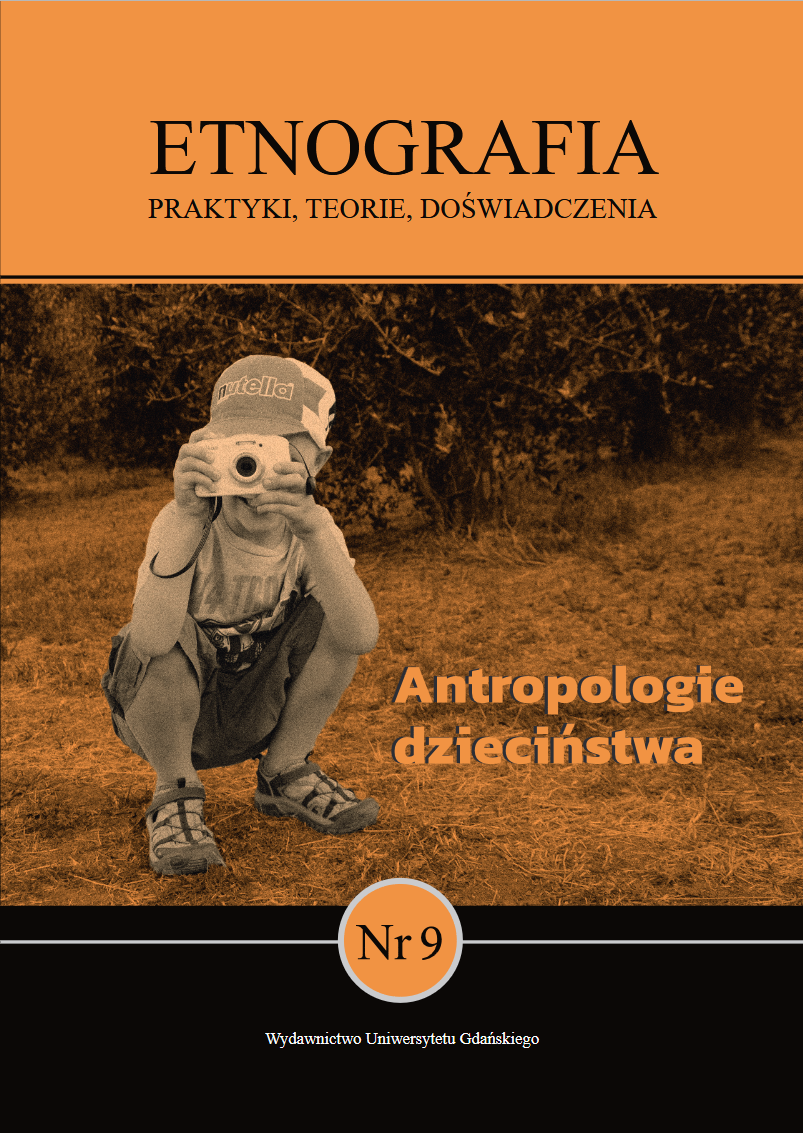Szkic autoetnograficzny o dzieciach w drodze
DOI:
https://doi.org/10.26881/etno.2023.9.16Słowa kluczowe:
children’s rights, boarder regime, humanitarian crisis, art.-based activism, migrationAbstrakt
The article examines the situation of children and youth in transit at the Polish-Belarusian border, focusing on the violence they face and the ambiguous procedures used to determine their age. These procedures, which rely on bone and dental examinations, are often interpreted to the detriment of young people. This practice, previously discussed in the literature, has been described as "adultification." This concept aptly captures not only the precarious situation of young people but also the ways in which their childhood is perceived—or denied—resulting in the erosion of their rights as children. The author also discusses an artistic project, the play Nabu’s Journey, inspired by a children’s book by Jarosław Mikołajewski. The play aims to raise awareness about the plight of young people at the border and foster dialogue on human solidarity in the face of humanitarian crises.
Downloads
Bibliografia
Burton L. (2007). Childhood adultification in economically disadvantaged families: A con-ceptual model. Family Relations, 56(4), 329–345. https://doi.org/10.1111/j.1741-3729.2007.00463.x.
Ellis, E., Bochner, A. (2016). Evocative Autoethnography: Writing Lives and Telling Stories. New York–London: Routledge.
Kacperczyk, A. (2014). Autoetnografia – technika, metoda, nowy paradygmat? O metodologicznym statusie autoetnografii. Przegląd Socjologii Jakościowej, 10(3), 32–74.
Leon L., Rosen R. (2023). Unaccompanied migrant children and indebted relations: Weaponizing safeguarding. Child & Family Social Work, 28(4), 1056–1065. https://doi.org/10.1111/cfs.13025.
Mikołajewski, J. (2016). Wędrówka Nabu. Kraków: Austeria.
Tymińska, A. (b.d.). „Soczewka dziecięcocentryczna”? Małoletni bez opieki na granicy polsko-białoruskiej. https://www.bbng.org/soczewka-dziecieco-centryczna [dostęp: 20.03.2023].
YouTube (b.d.). Dym z papierosów. https://www.youtube.com/shorts/W2Ja6SjZMl0 [dostęp: 20.03.2023].
YouTube (2021a). Dzieci takie same jak moje – migrowanie między inne a takie samo – co jest pomiędzy. https://www.youtube.com/watch?v=AqDJvZDMgz0 [dostęp: 20.03.2023].
YouTube (2021b). Handel ludźmi. https://www.youtube.com/watch?v=IUZ3R7lsPhE [dostęp: 20.03.2023].
Opublikowane
Jak cytować
Numer
Dział
Licencja
Czasopismo wydawane jest na licencji Creative Commons Uznanie autorstwa-Na tych samych warunkach 4.0 Międzynarodowe.

 Uniwersyteckie Czasopisma Naukowe
Uniwersyteckie Czasopisma Naukowe








